This drought has been crazy. Aside from birds, I'm just not seeing the usual wildlife species that hang around the garden -- most notably butterflies are absent. I think it's just too ridiculously hot. That being said, I'm seeing all sorts of other cool creatures around, and happily so.
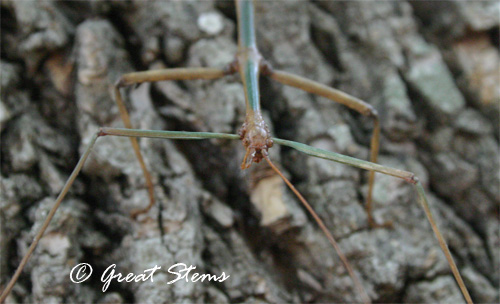
We came home one day to a stick insect not-so-camouflaged on our garage door. I moved it over to a tree where it seemed much more at home. Pictures got harder, though.
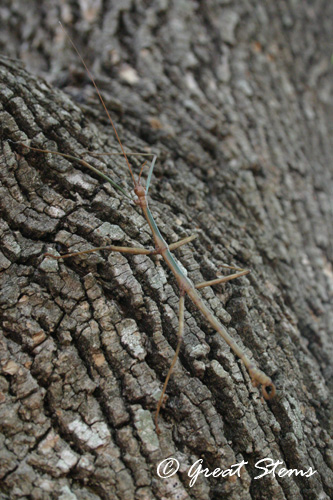
Check out its scorpion-like display:
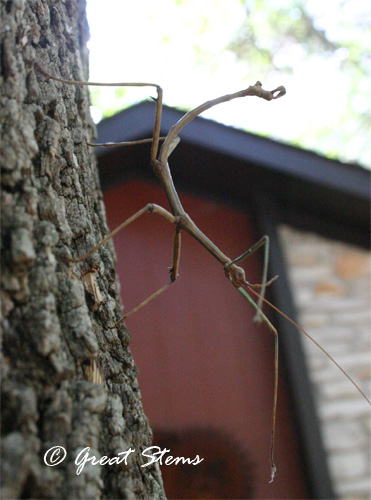
Clearly I liked it more than it liked me.
Our front pond has been busy with aquatic life. Apparently, it's become THE place to lay eggs.
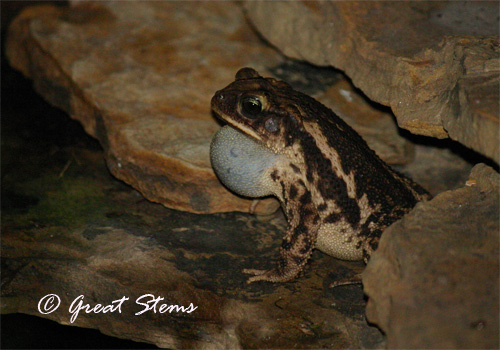 The male toads are singing each night, doing their best to entice a female for a dip in the pond.
The male toads are singing each night, doing their best to entice a female for a dip in the pond.
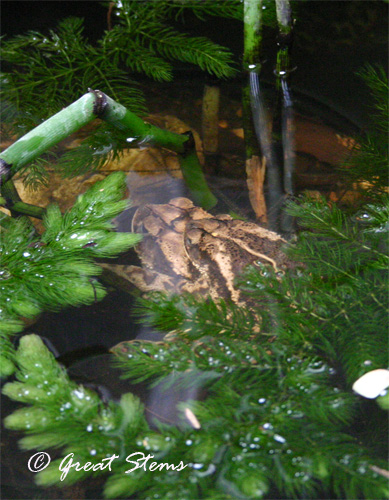 Sometimes one even gets lucky!
Sometimes one even gets lucky!
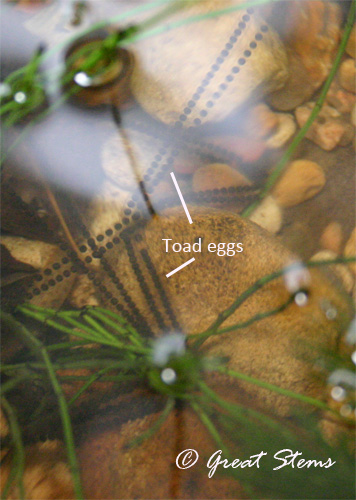 Toad eggs are laid in long gel-like tubes. The eggs are laid in mass quantity.
Toad eggs are laid in long gel-like tubes. The eggs are laid in mass quantity.
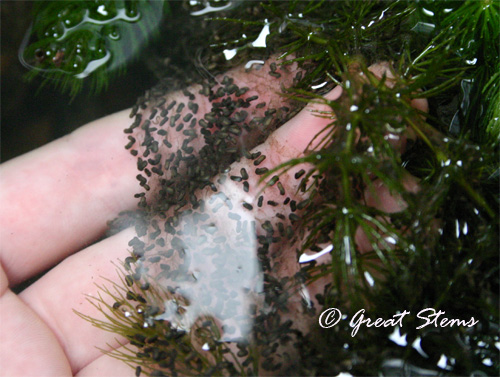 Within just a day or two, the eggs become blobs, also known as embryos.
Within just a day or two, the eggs become blobs, also known as embryos.
Here's a closer view:
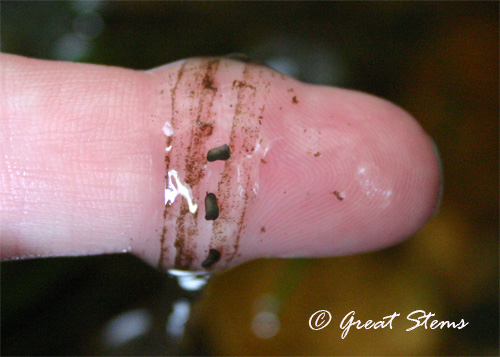
Soon the blobs/embryos become the tadpoles we know and love.
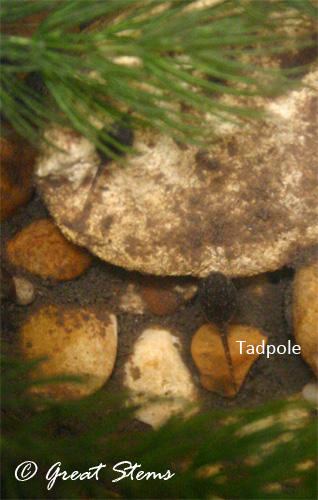 Despite the great numbers of eggs laid, very few make it to adulthood to live the life of a toad. They become food for other creatures, including the one below.
Despite the great numbers of eggs laid, very few make it to adulthood to live the life of a toad. They become food for other creatures, including the one below.
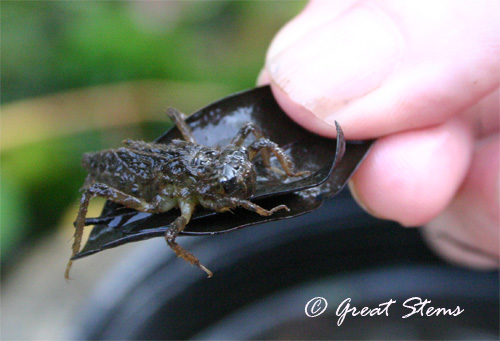 Ewww, you say? I say not! That, my friends, is a dragonfly nymph, and who doesn't love dragonflies? Other than the bugs they devour, I mean.
Ewww, you say? I say not! That, my friends, is a dragonfly nymph, and who doesn't love dragonflies? Other than the bugs they devour, I mean.
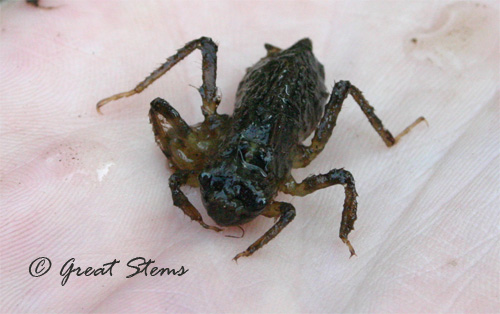 We find these nymphs -- damselfly nymphs, too -- in our ponds all the time. It turns out that dragonfly nymphs can play dead. They stay very still if briefly removed from the water, but --whoosh!-- they'll zip back to the water depths the moment they feel that water surround them again.
We find these nymphs -- damselfly nymphs, too -- in our ponds all the time. It turns out that dragonfly nymphs can play dead. They stay very still if briefly removed from the water, but --whoosh!-- they'll zip back to the water depths the moment they feel that water surround them again.
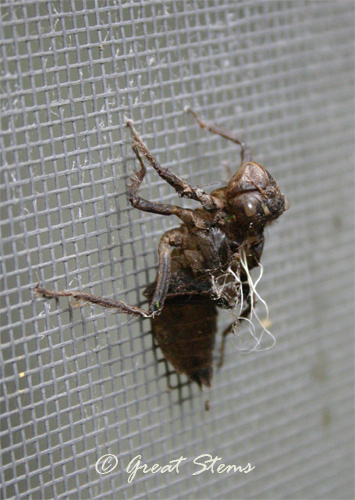
Here's the exoskeleton left behind after an adult dragonfly emerged and flew away. Those weird-looking white strings are actually tracheal tubes that once transported oxygen. I'm so curious what kind of dragonfly completed its life cycle in our little pond. I'll never know, I suppose, but I have seen a Neon Skimmer flying around the pond. Who knows... maybe!
Back in the back, our hackberry has these nifty little leaf galls. It turns out that these are caused by Celticesis midges.
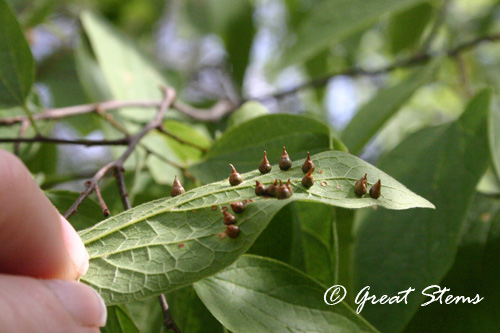
The adult midges, which are little flies, lay eggs on the underside of a hackberry leaf, and the plant tissue forms galls around them. The larvae have a miniature habitat inside the gall, where they eat and develop.
In other news, we had an sssstupendous set of ssssnake sightings last weekend. On a hike at Walnut Creek park, we decided to take paths less traveled for a change. Within moments we discovered this beauty:
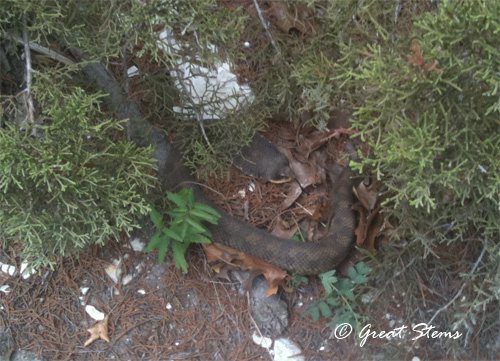
It's an Eastern Hognosed Snake, flattening its head and hissing something fierce. While I didn't disturb it more than to take a picture with my camera phone, if I'd gotten much closer, this snake would have flipped upside-down and played dead. Part of me wishes I could have witnessed that, but I just don't like to stress out wildlife (more than is required for a quick photo op, that is).
In a different area of the park, we found a little snake traveling along dried-up sections of the creek.
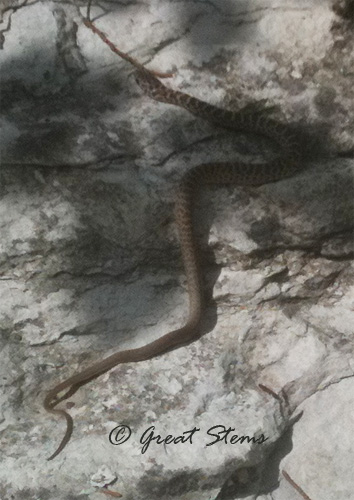 Camera phones and wild snakes just don't work well together. I really should at least carry a pocket camera on these hikes. But I think this might be a juvenile Yellow-Bellied Racer. It was very small and quickly found a hole to curl up into.
Camera phones and wild snakes just don't work well together. I really should at least carry a pocket camera on these hikes. But I think this might be a juvenile Yellow-Bellied Racer. It was very small and quickly found a hole to curl up into.
Just seeing these two snakes had already made our day, but when we returned home, we found a little snake in our hallway!
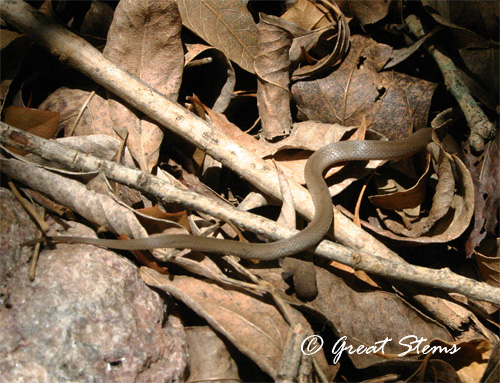 We rescued it and took it outside. I tried to get a picture, but that little snake moved to hide in the leaves as fast as its little no-legs could carry it. The best I can tell you is that it is possibly a snake in the Tantilla genus (perhaps Flathead or Plains Blackhead), or perhaps it is a Rough Earth Snake.
We rescued it and took it outside. I tried to get a picture, but that little snake moved to hide in the leaves as fast as its little no-legs could carry it. The best I can tell you is that it is possibly a snake in the Tantilla genus (perhaps Flathead or Plains Blackhead), or perhaps it is a Rough Earth Snake.
Just a few days later, my friend Diane shared a picture of a molted skin left behind by a friend's pet snake her family was snake-sitting. She didn't know the species, but from her description, it sounded like it might be a corn snake.
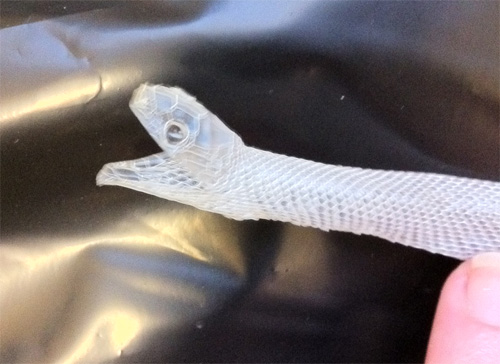
Have you ever seen a snake skin include the head and eye areas? Holy moly, now THAT'S a creature feature.
And the harvestmen are back, this time congregating in the highest eave on my house, making it nearly impossible for me to (get my husband to) kindly move them back to the greenbelt behind the house. Hopefully visitors to my house won't look up. I'm not taking a picture. Hey, even a wildlife lover can have something to cringe about! They're good garden predators, so I don't *really* mind them. In some ways, harvestmen, a.k.a. daddylonglegs, are even kind of cool. But they do creep me out. It has something to do with discovering thousands of them bobbing inches above my head (and my big mass of hair) when I was crawling through a cave.
Instead of harvestmen, I'll end with a skipper, one of the few butterflies we do get to see from time to time even in this horrible drought.
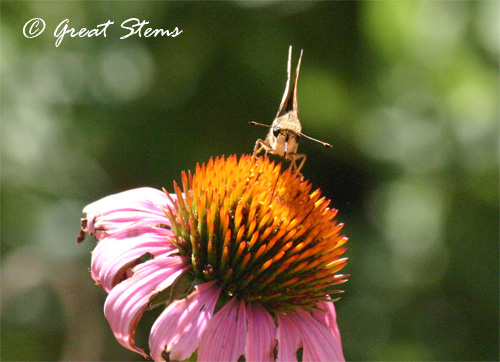
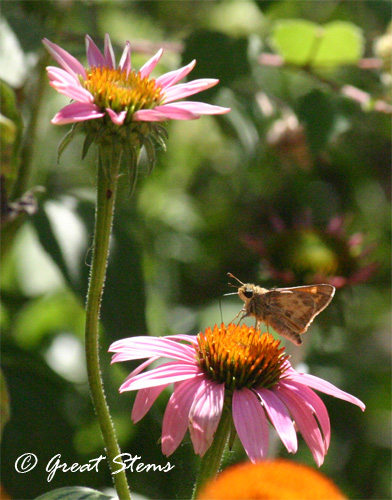 No legs, two legs, four legs, six legs, more -- they put the wild in this wildlife garden!
No legs, two legs, four legs, six legs, more -- they put the wild in this wildlife garden!

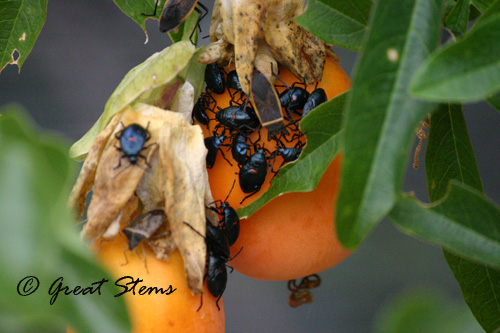
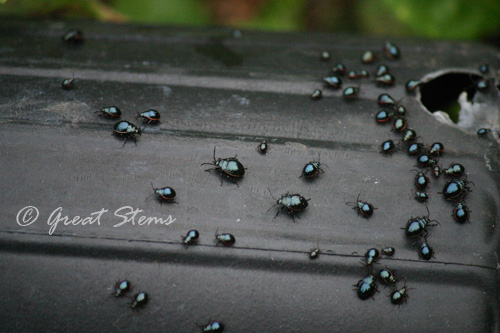
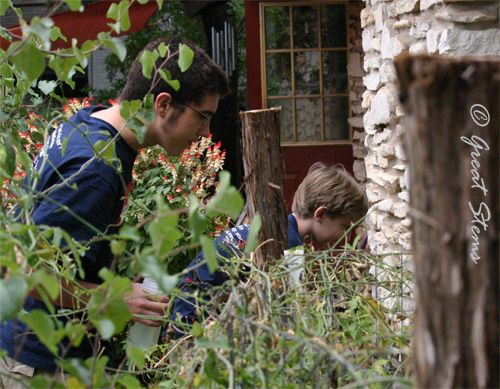
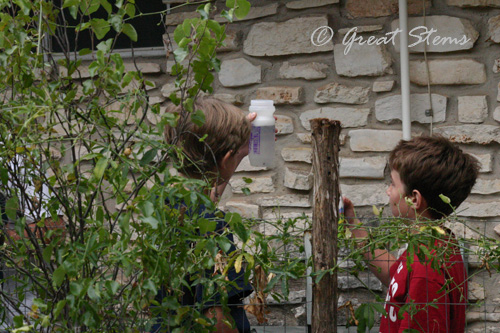
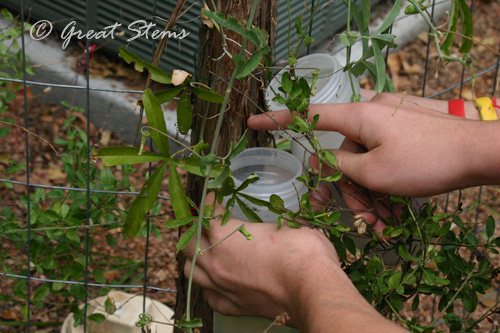
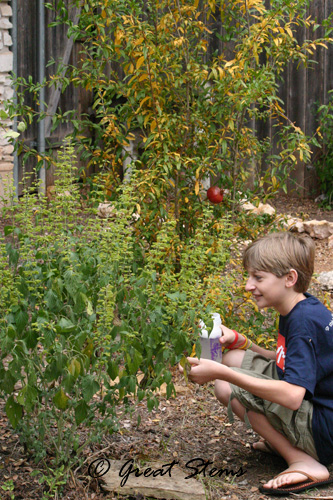
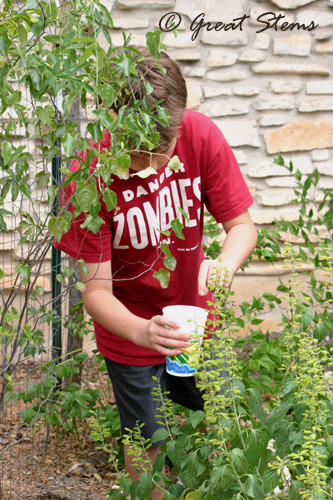
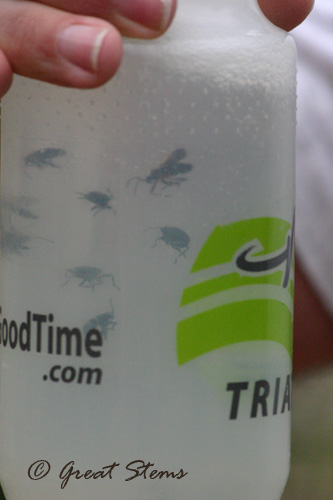
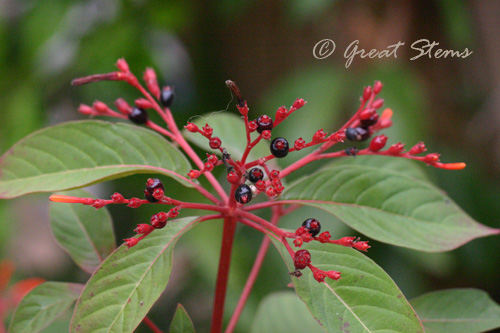
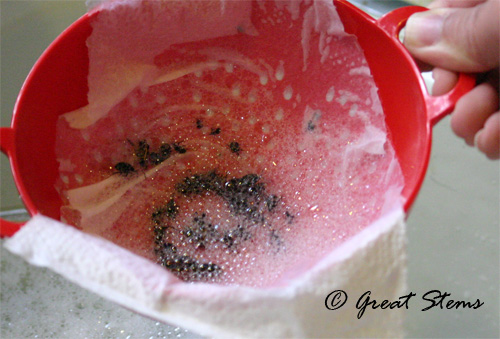
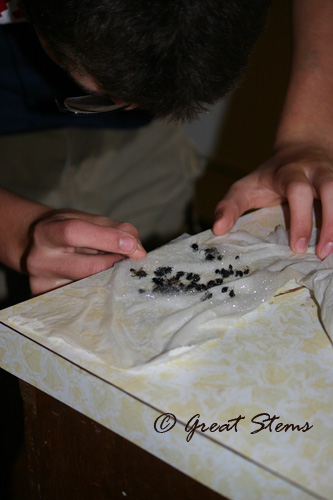
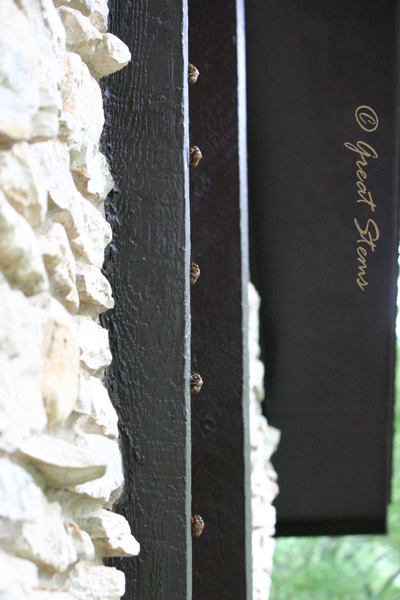
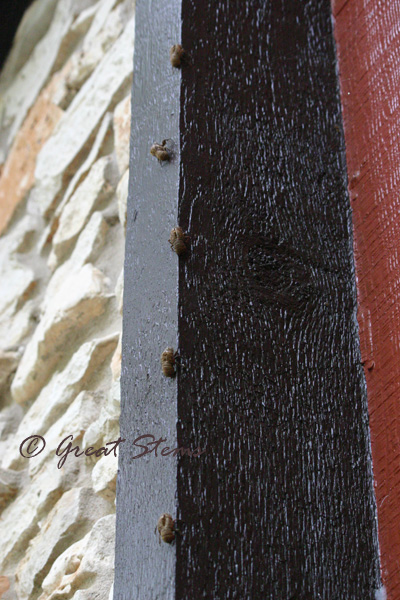
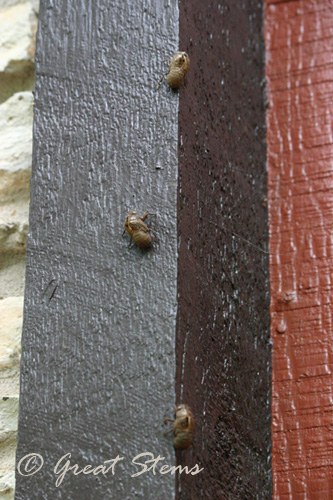

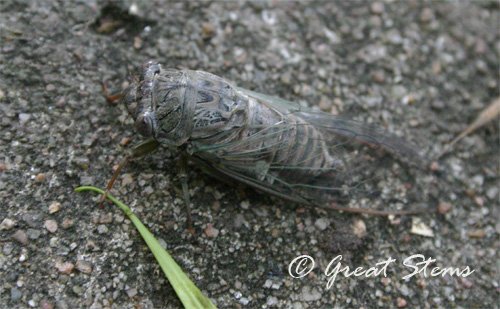
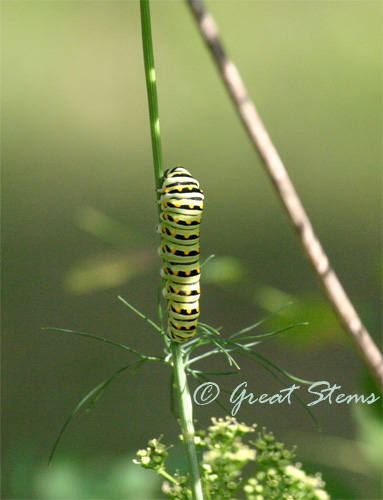
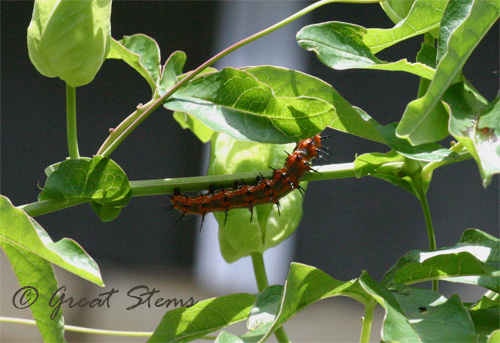
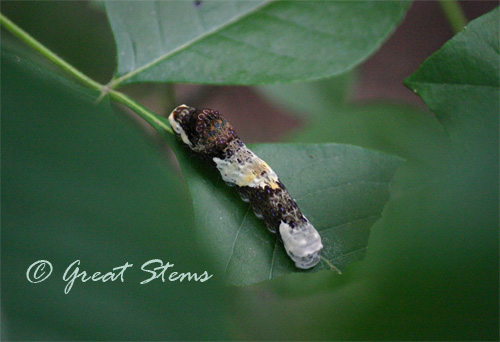
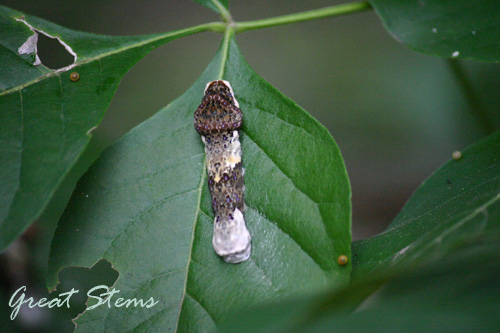
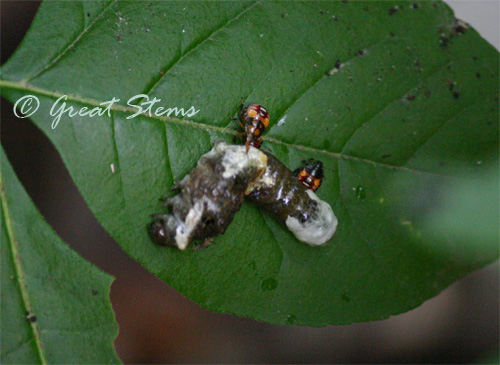
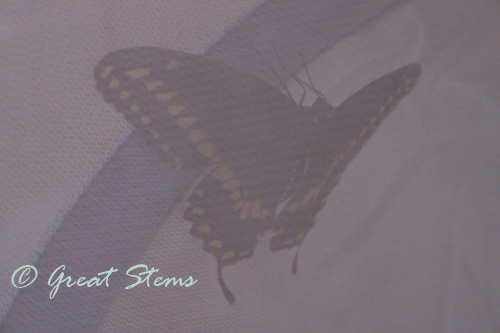
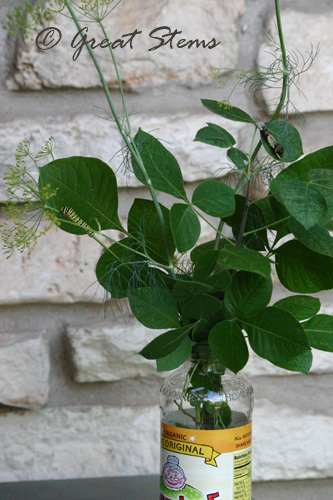
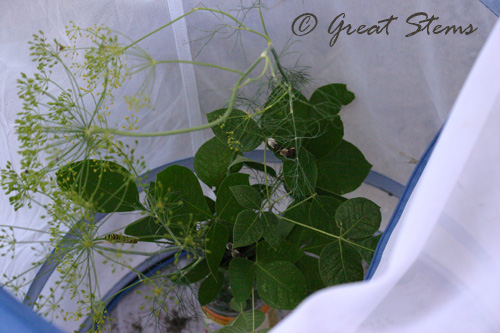
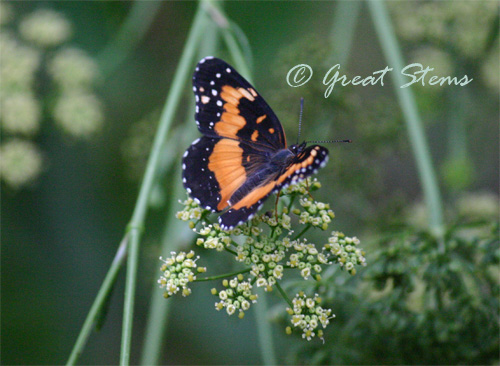
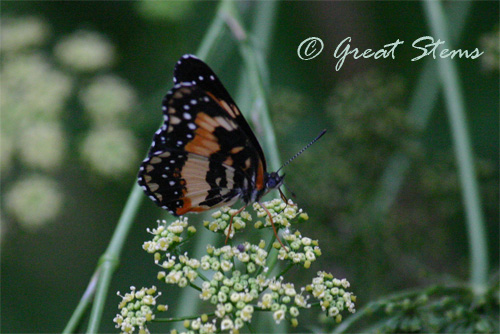
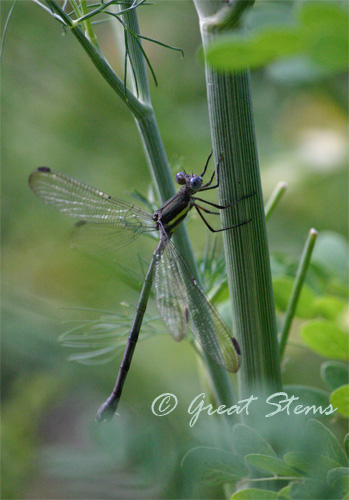
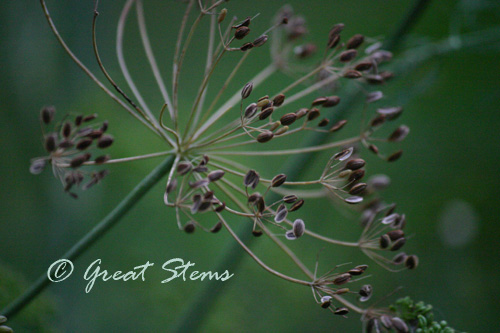

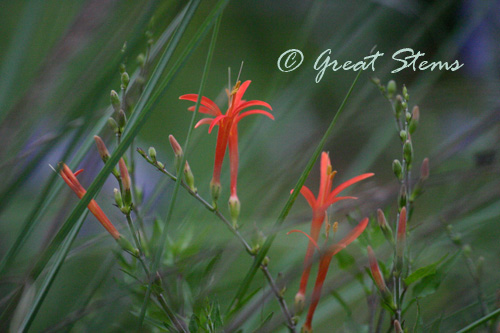
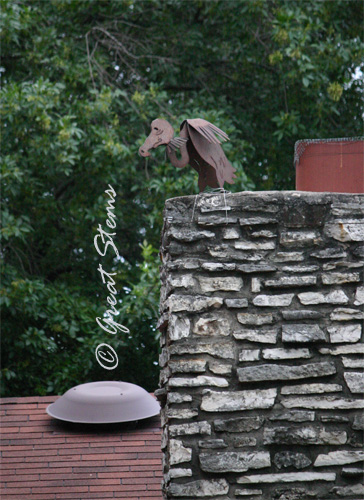
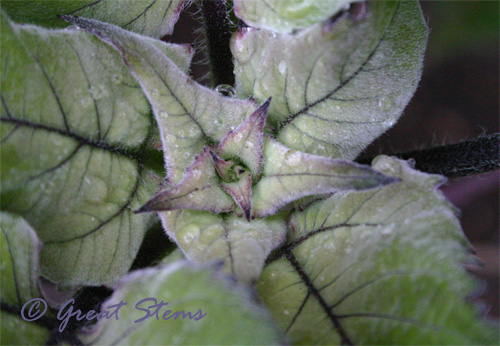
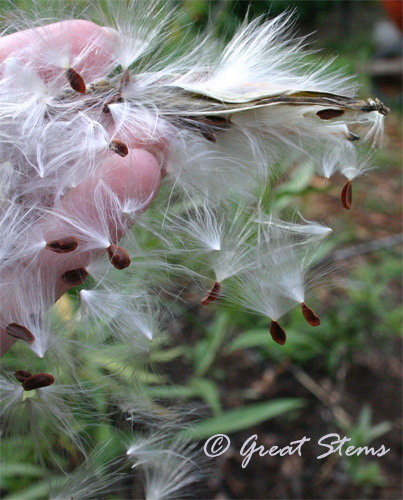
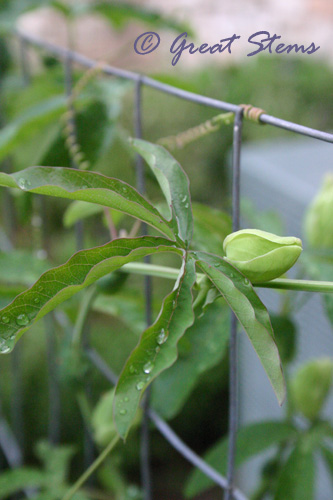
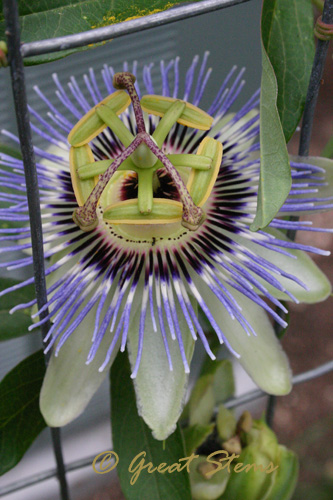
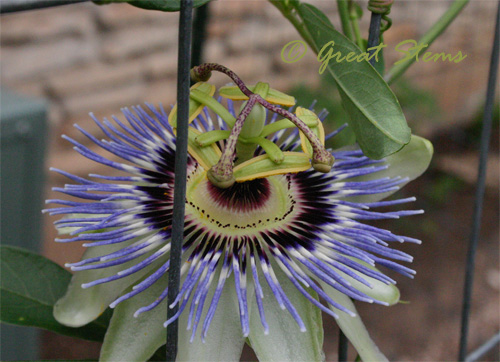
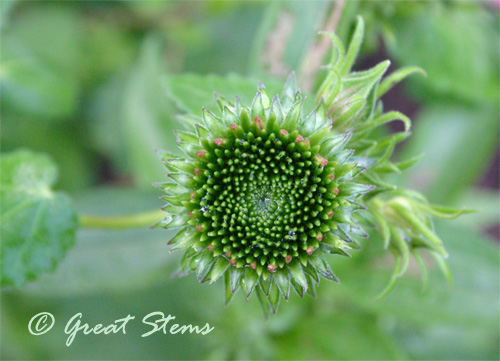
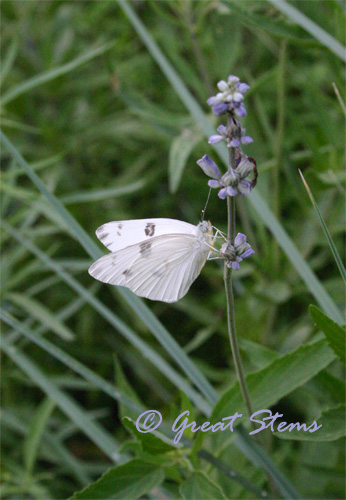
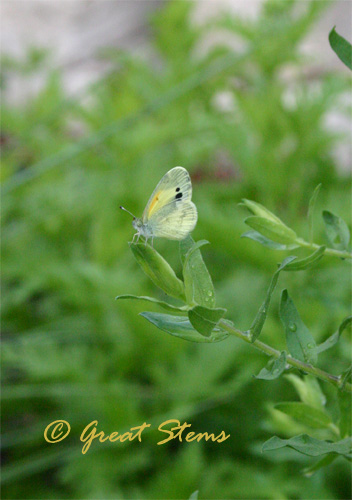
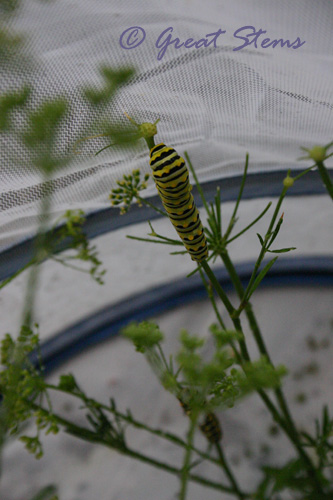
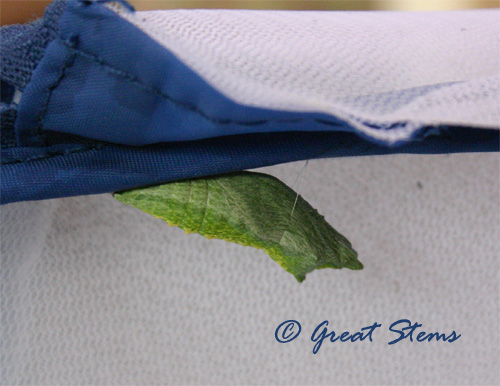
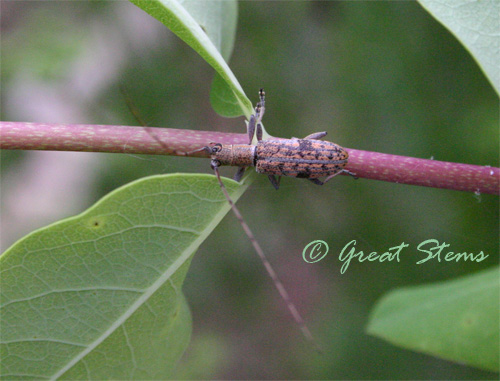
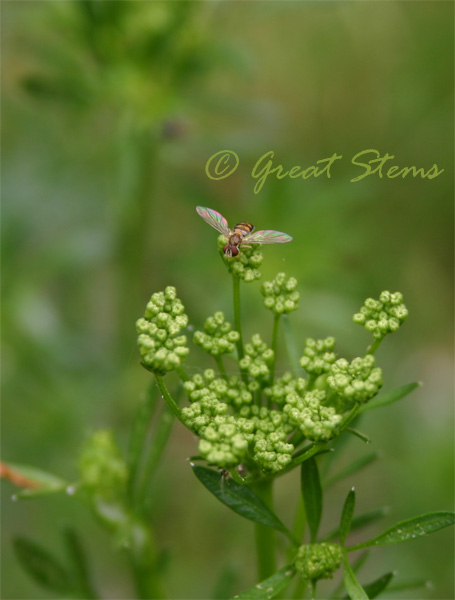
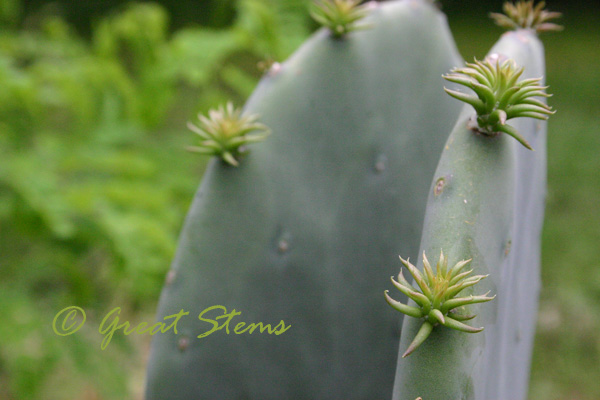
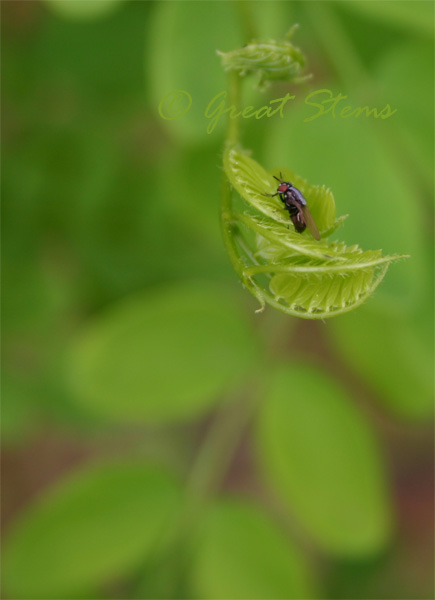
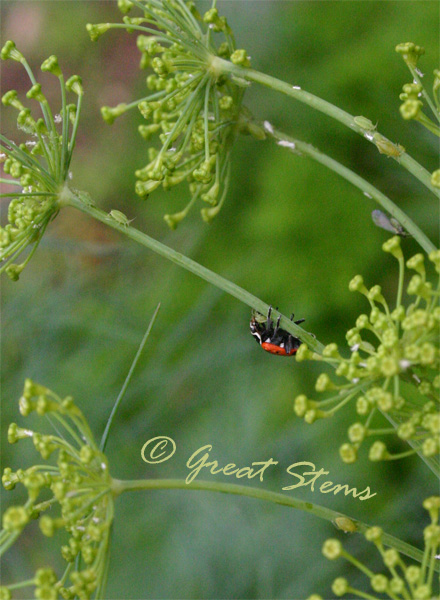
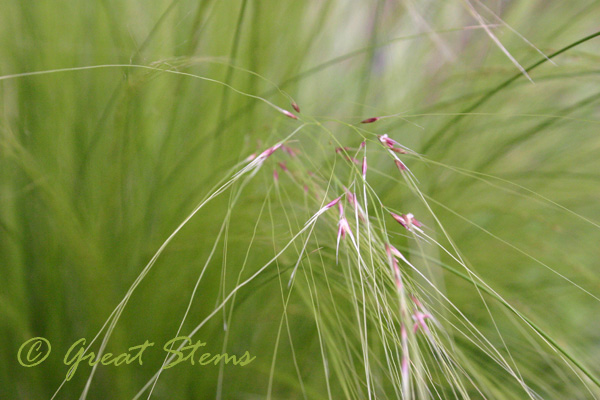
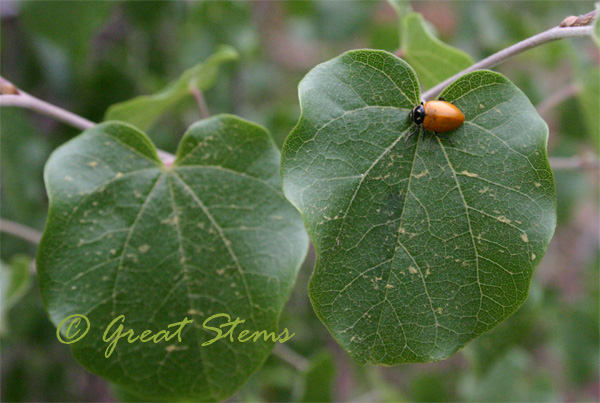
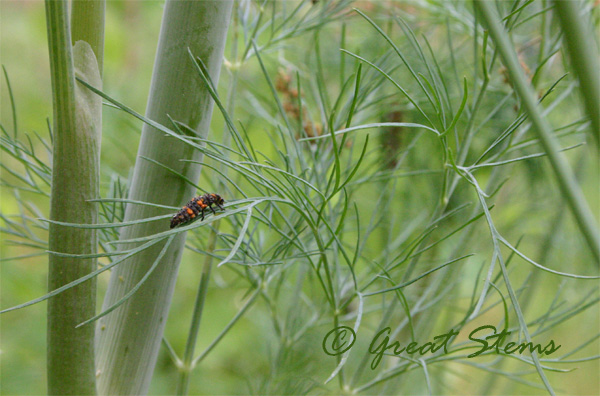
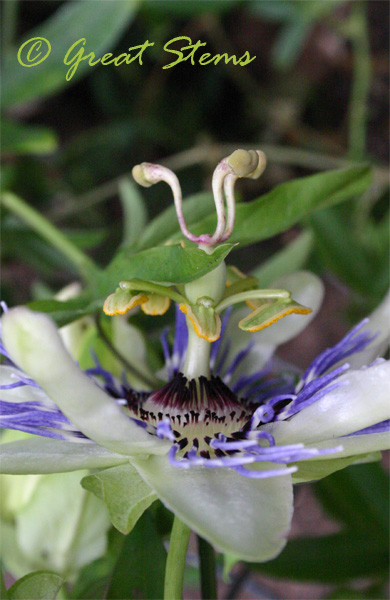
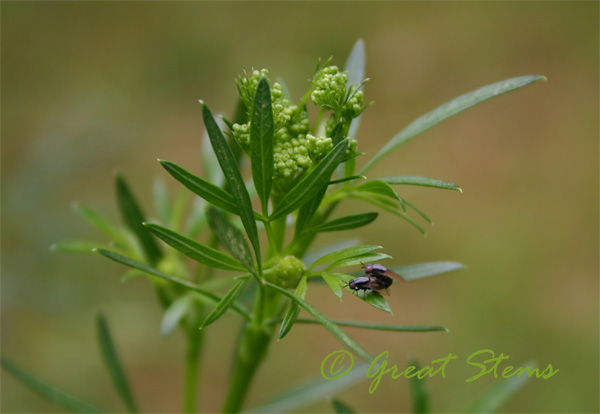
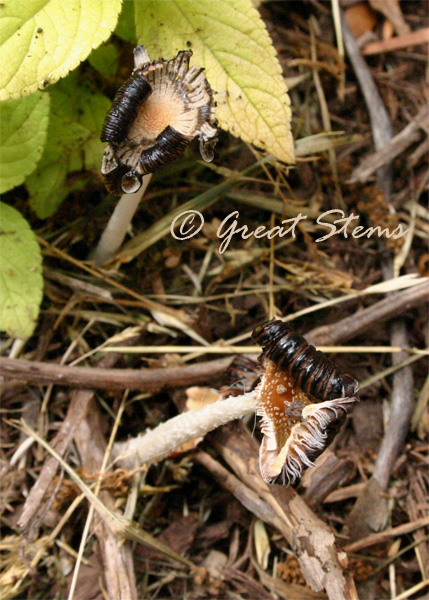
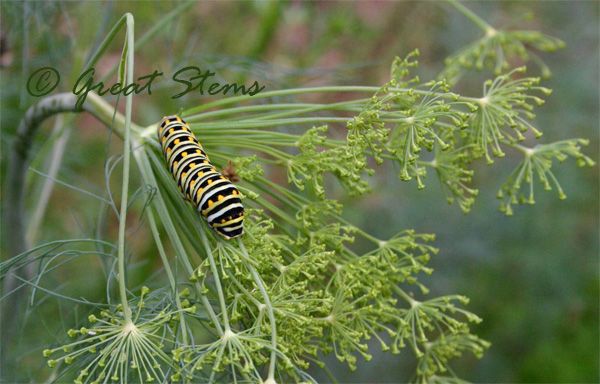
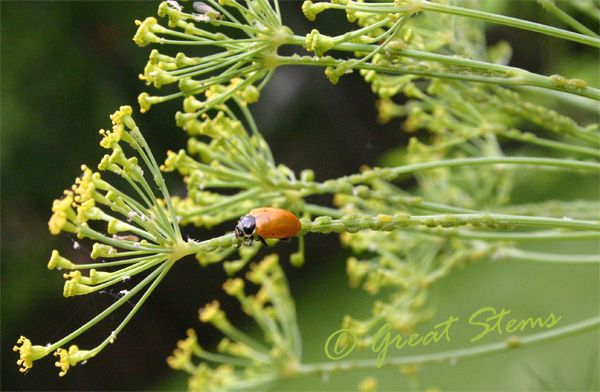
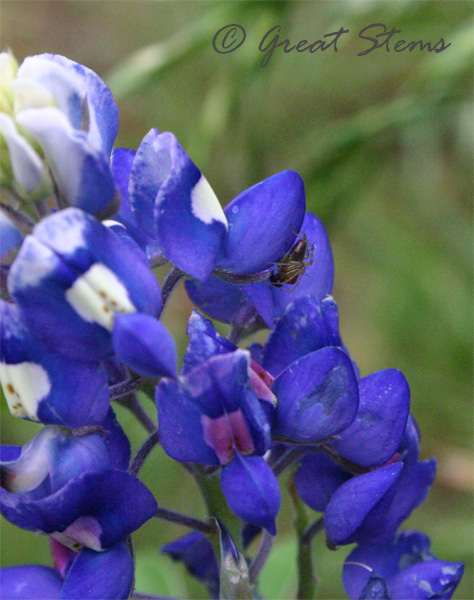
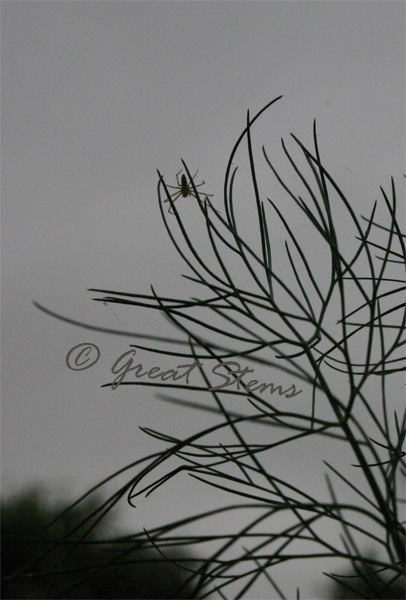 One morning, and a fine one at that.
One morning, and a fine one at that.
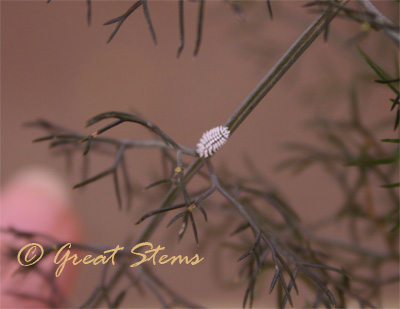
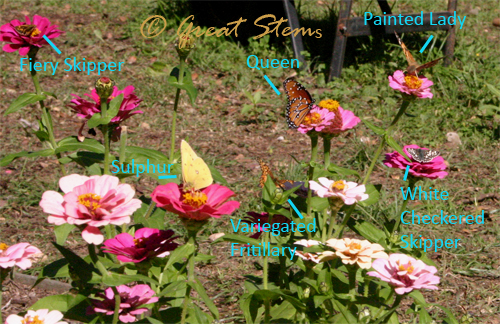
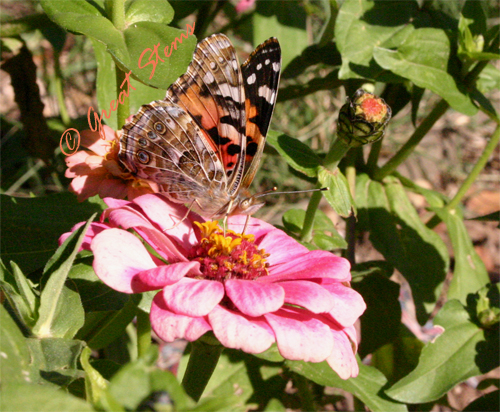
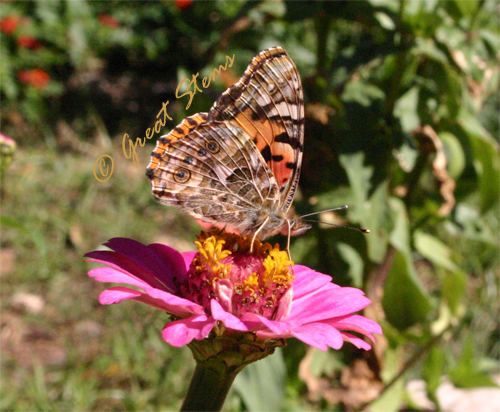
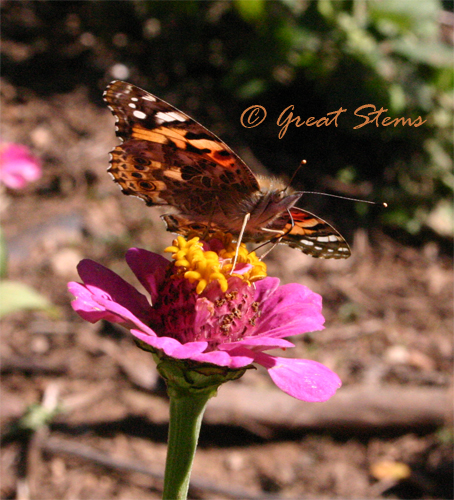
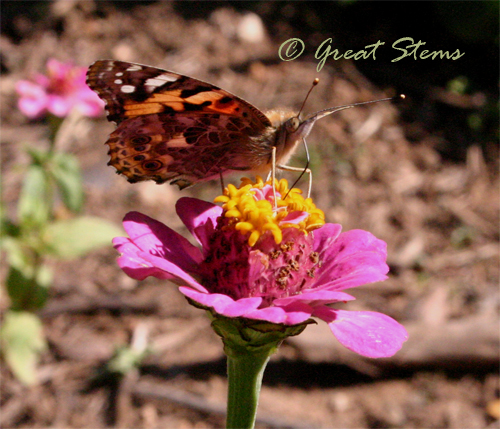
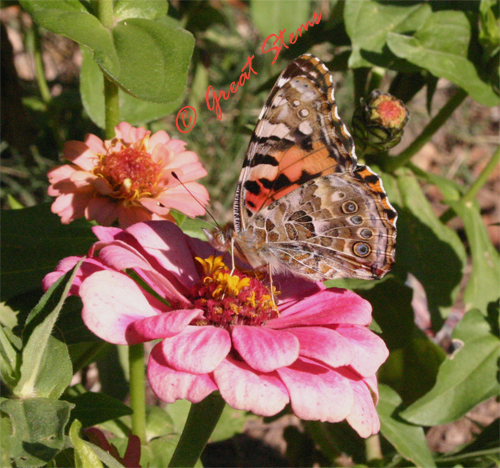
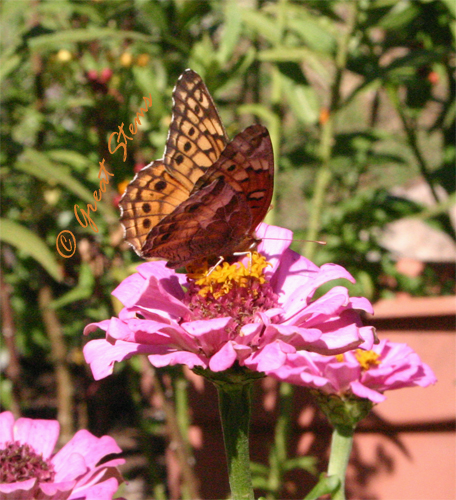
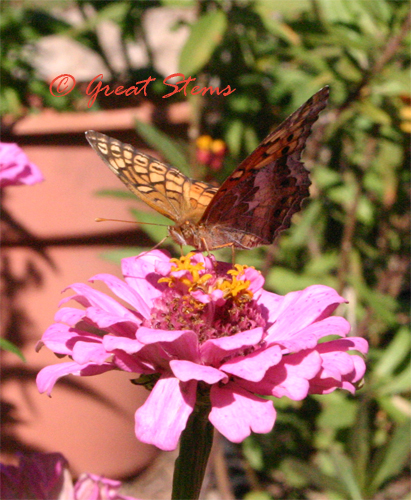
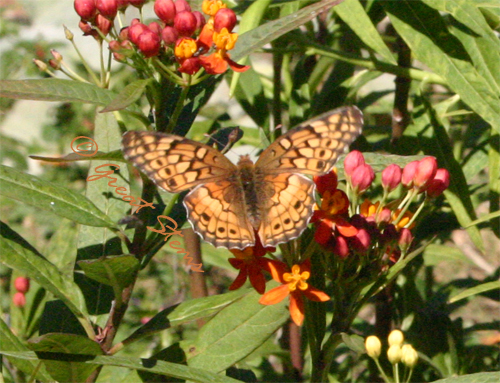
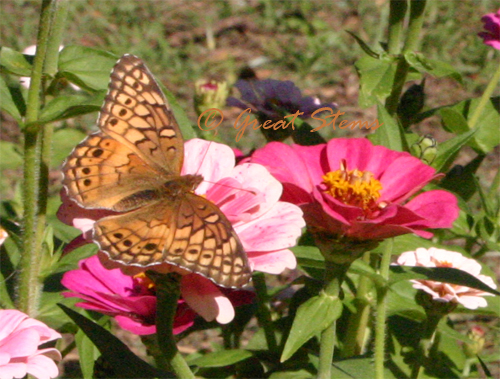
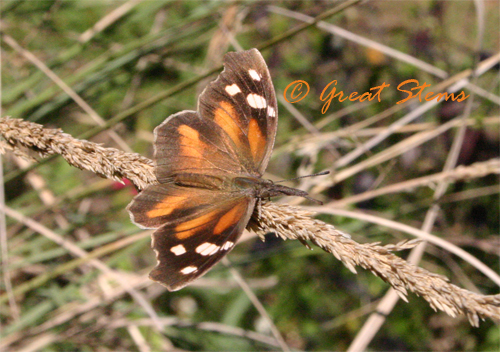
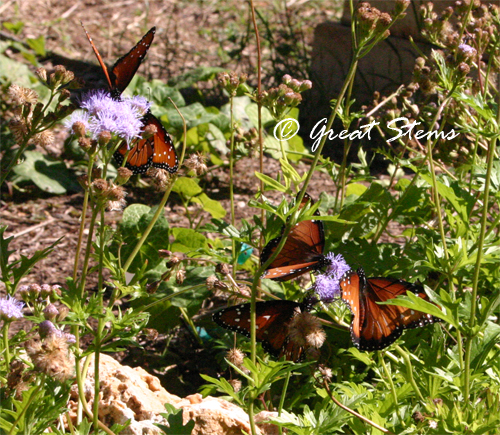
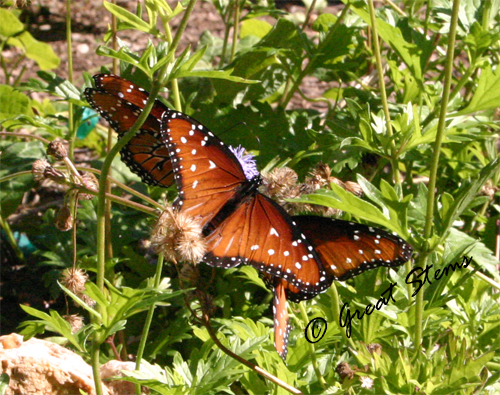
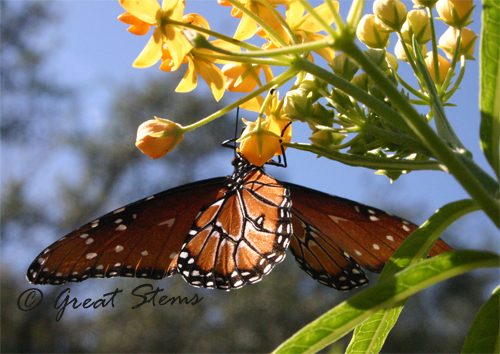
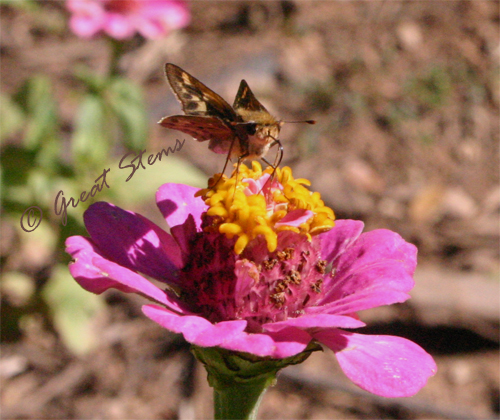
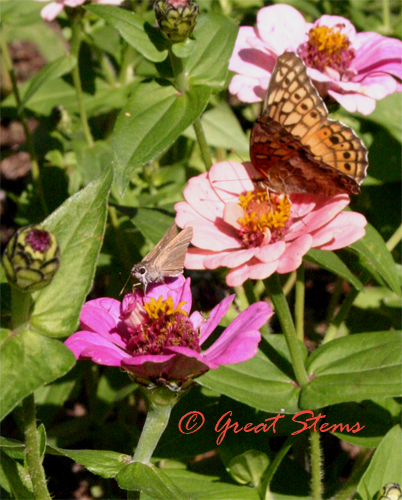
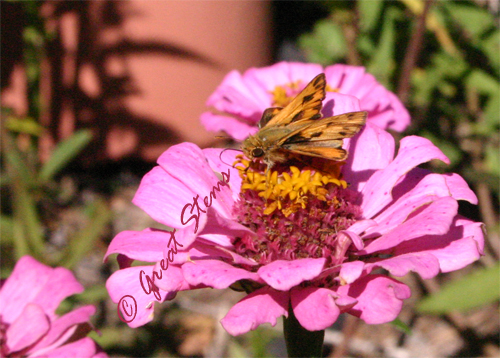
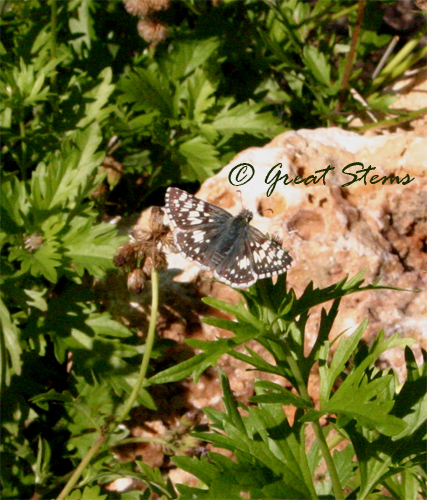
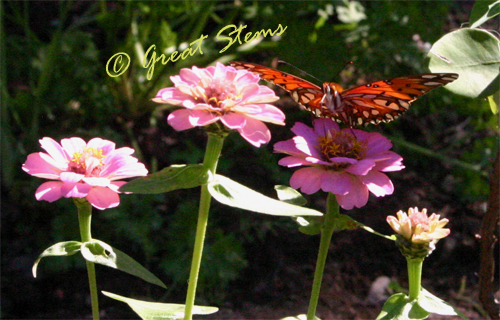
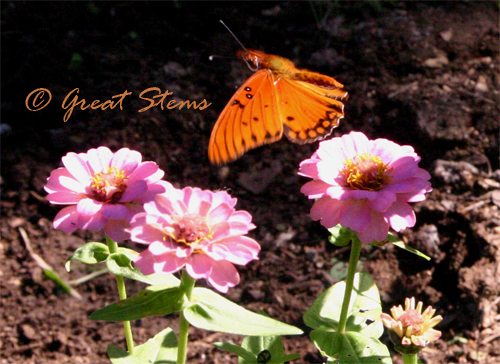
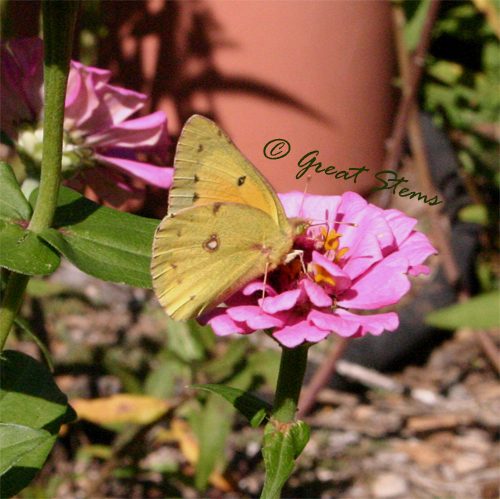
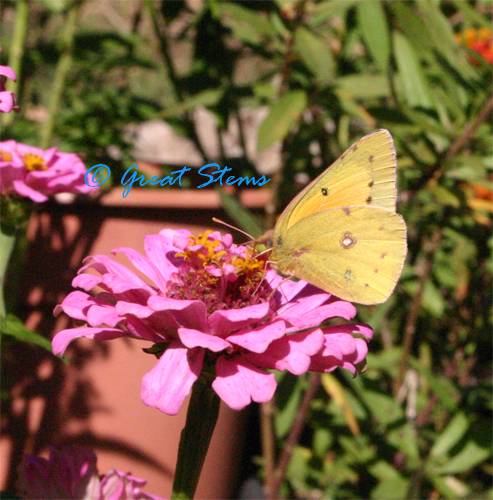
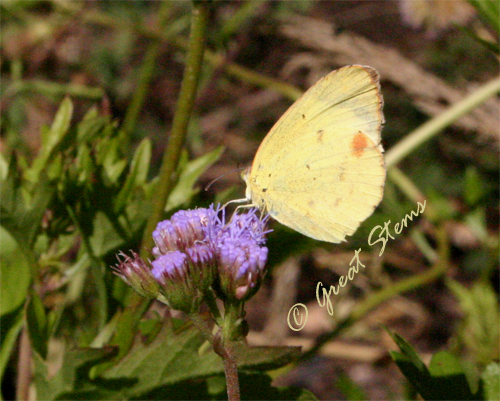
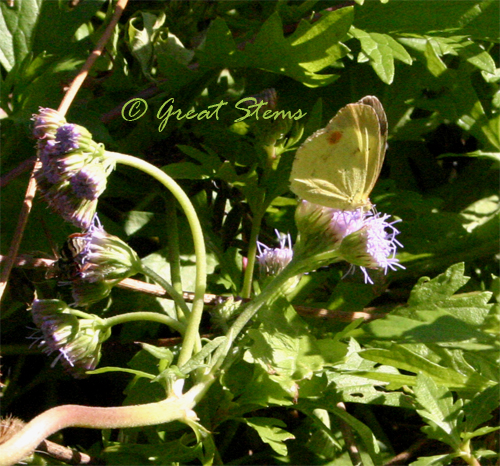
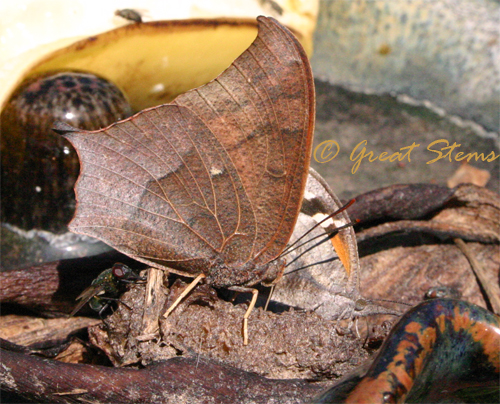
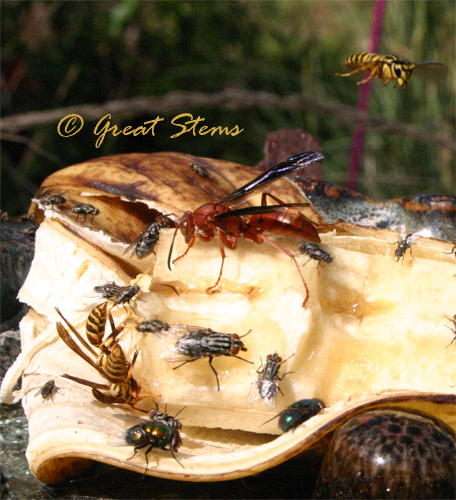
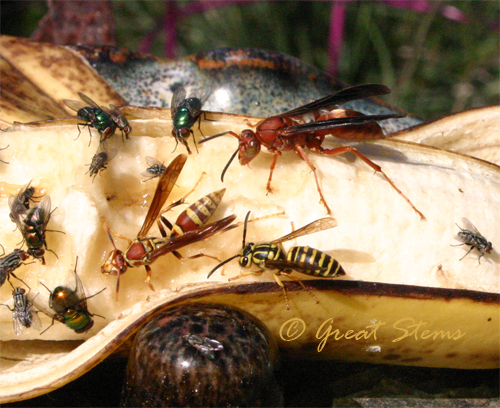
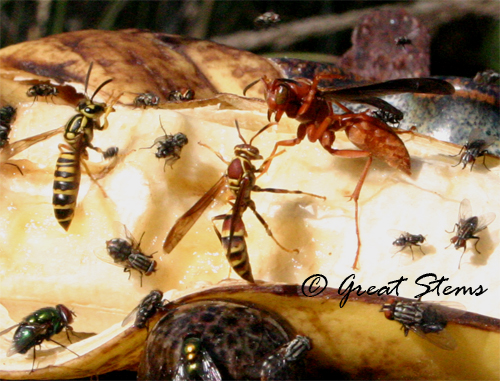
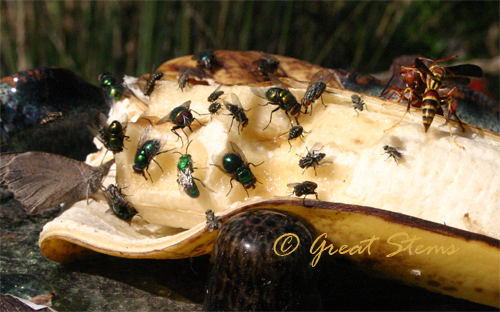 Do you see the beautiful metallic turquoise insect in the lower left corner? That's a Cuckoo Wasp -- the only one I can identify other than "fly" or "wasp."
Do you see the beautiful metallic turquoise insect in the lower left corner? That's a Cuckoo Wasp -- the only one I can identify other than "fly" or "wasp."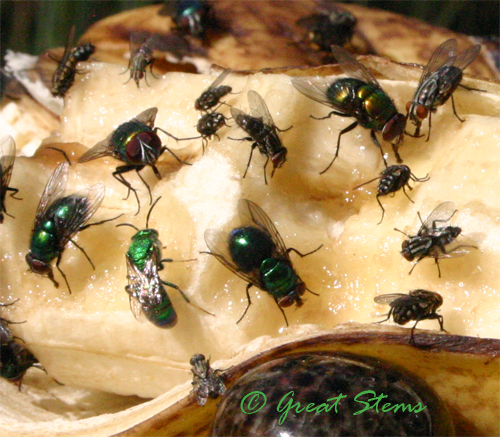
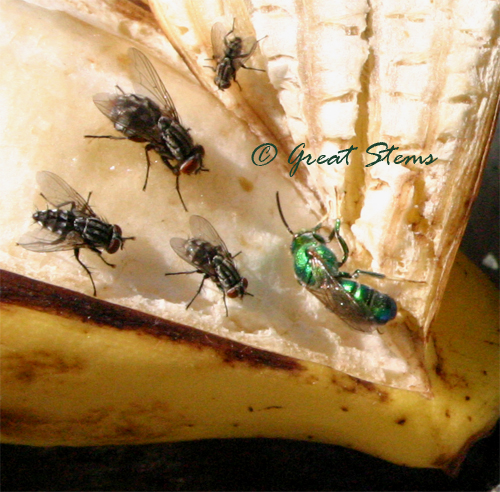
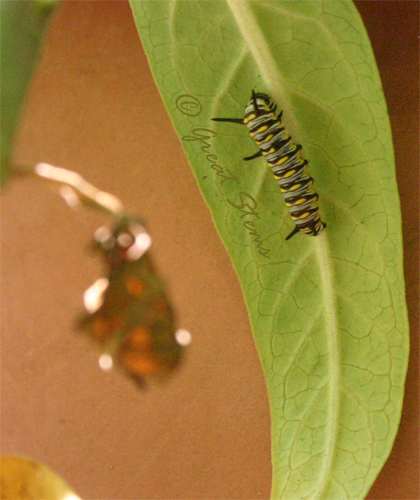
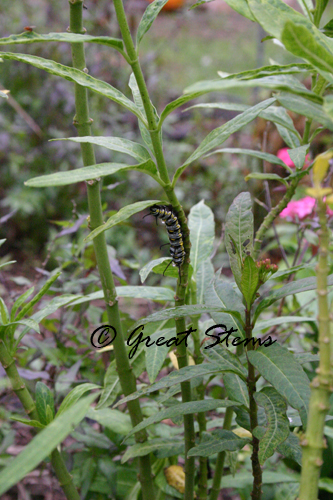 And the flies and wasps weren't the only visitors to the bananas. Snouts began to venture over to the fresher banana, and today I found my first Red Admiral. What a beauty!
And the flies and wasps weren't the only visitors to the bananas. Snouts began to venture over to the fresher banana, and today I found my first Red Admiral. What a beauty!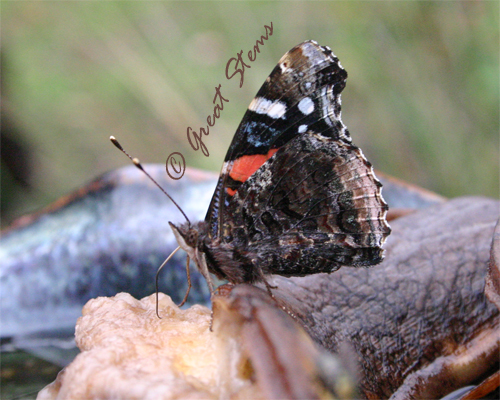
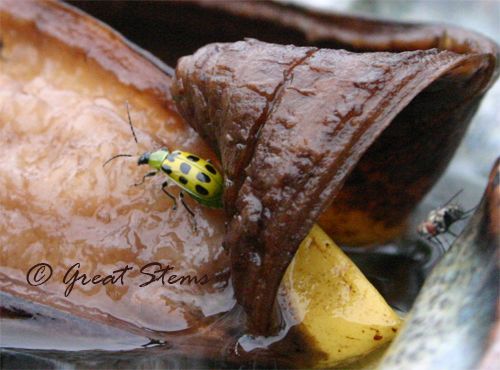
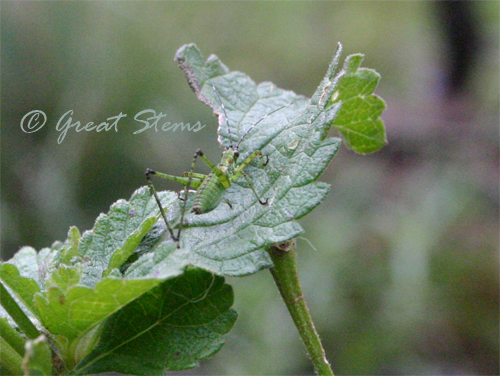 And off in the former pumpkin patch, where a few pumpkins and vines await me doing something about them, I found an icky green guy having a feast.
And off in the former pumpkin patch, where a few pumpkins and vines await me doing something about them, I found an icky green guy having a feast.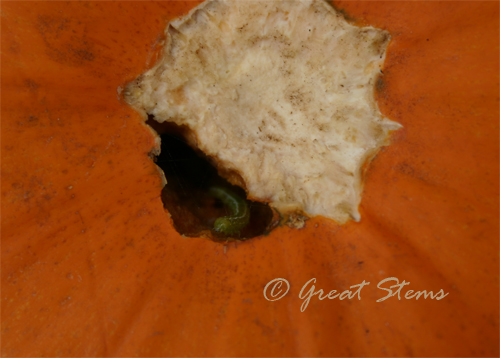 Enjoy it while you can, buddy.
Enjoy it while you can, buddy. 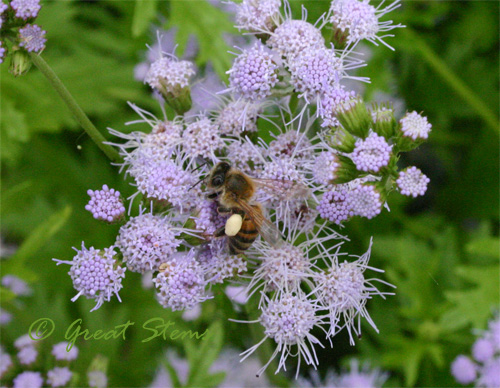
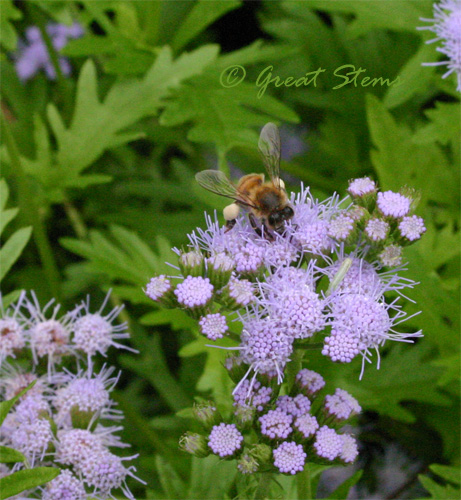
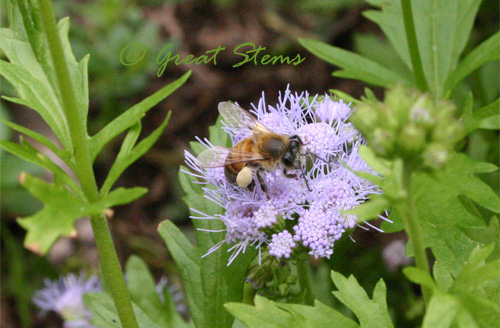 In the same patch of flowers, the honeybees on the Zexmenia had bright orange pollen baskets on their little legs.
In the same patch of flowers, the honeybees on the Zexmenia had bright orange pollen baskets on their little legs.
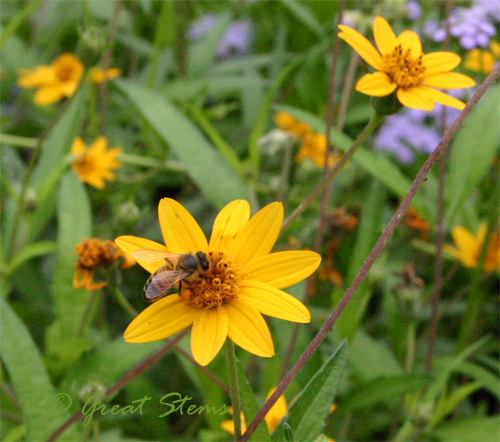
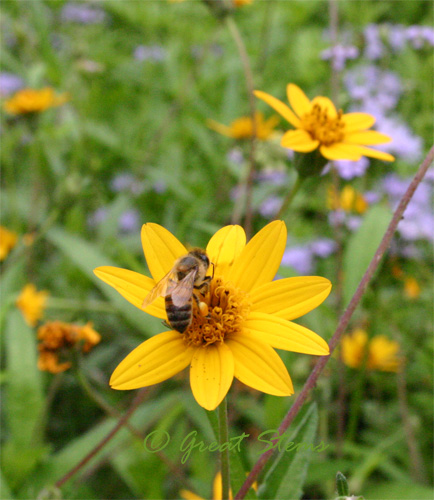
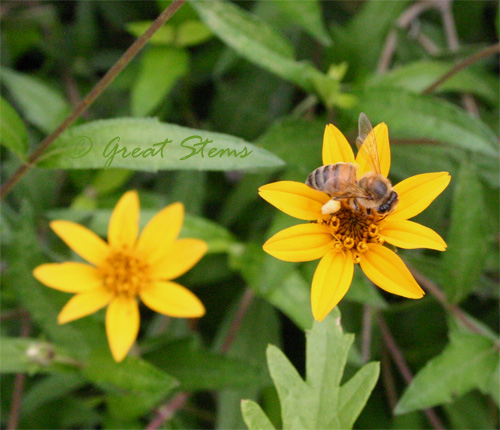
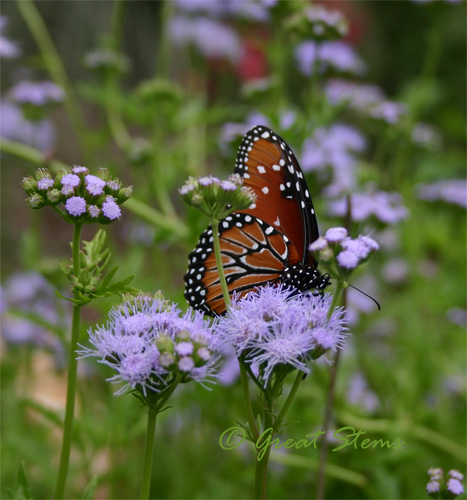
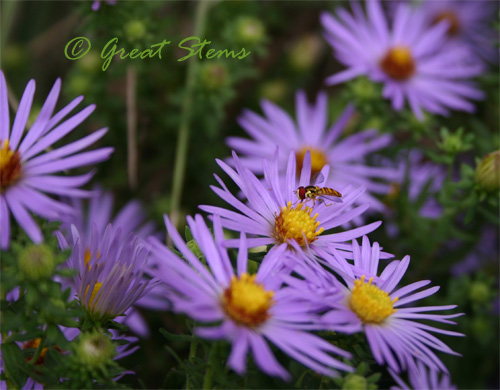
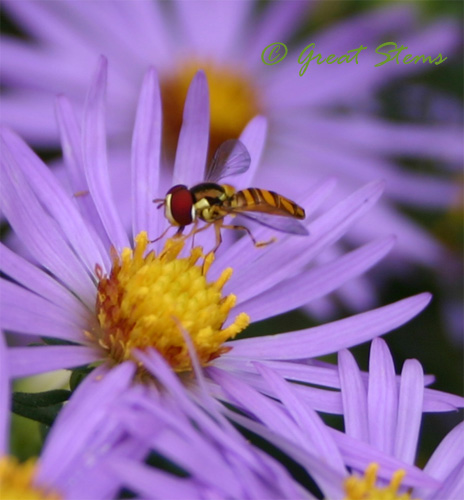
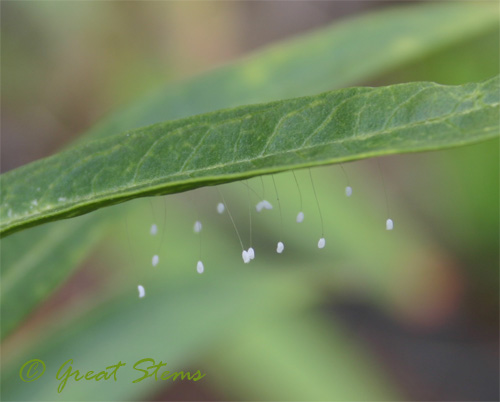 These are the eggs of green lacewings. As larvae, they are voracious aphid eaters. Yay, another ally in the garden! I need them because the aphids are worse than ever. I seem to have least three species now --- I'll call them green, yellow, and beige. The green I'm sure are corn leaf aphids. I have got to get out and tackle them TODAY. My veggies, my milkweed, and now my firebush plant are all having an aphid problem. The little pests took advantage of my time away from the garden during the rainy week and bred like rabbits. I'm starting to think that it's the other way around, and rabbits breed like aphids. Today I'm seeing wings on some. Gah, more colonization!
These are the eggs of green lacewings. As larvae, they are voracious aphid eaters. Yay, another ally in the garden! I need them because the aphids are worse than ever. I seem to have least three species now --- I'll call them green, yellow, and beige. The green I'm sure are corn leaf aphids. I have got to get out and tackle them TODAY. My veggies, my milkweed, and now my firebush plant are all having an aphid problem. The little pests took advantage of my time away from the garden during the rainy week and bred like rabbits. I'm starting to think that it's the other way around, and rabbits breed like aphids. Today I'm seeing wings on some. Gah, more colonization!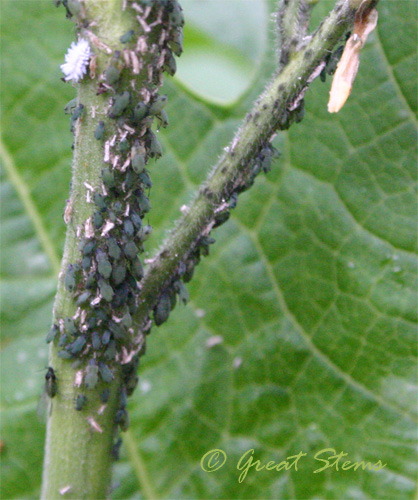
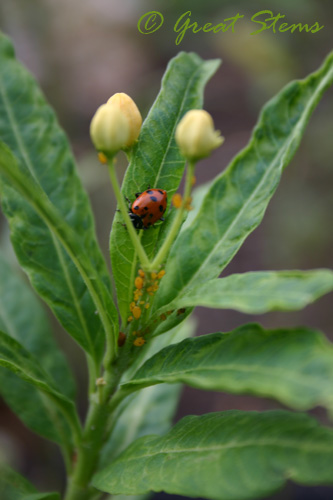 So I've got new lacewings arriving soon, and of course I've got ladybugs. More spiders are arriving, as are earthworms. The bees are getting plentiful, and I don't even have to do the veggie porn thing to pollinate my plants anymore. I truly love the way nature just naturally (ha) balances its ecosystems. Got organic wastes? Happy earthworms move in. Got flowers? Let's pollinate. Overpopulation of something? Here come the predators. And here come the predators to eat the other predators. Oh look, birdie treats. And then snakes. And hawks. Whee, life is grand.
So I've got new lacewings arriving soon, and of course I've got ladybugs. More spiders are arriving, as are earthworms. The bees are getting plentiful, and I don't even have to do the veggie porn thing to pollinate my plants anymore. I truly love the way nature just naturally (ha) balances its ecosystems. Got organic wastes? Happy earthworms move in. Got flowers? Let's pollinate. Overpopulation of something? Here come the predators. And here come the predators to eat the other predators. Oh look, birdie treats. And then snakes. And hawks. Whee, life is grand.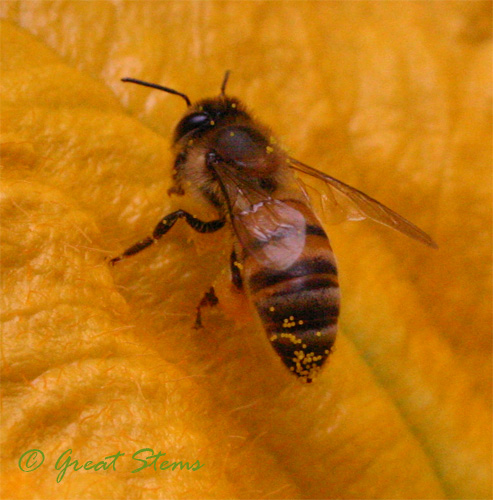
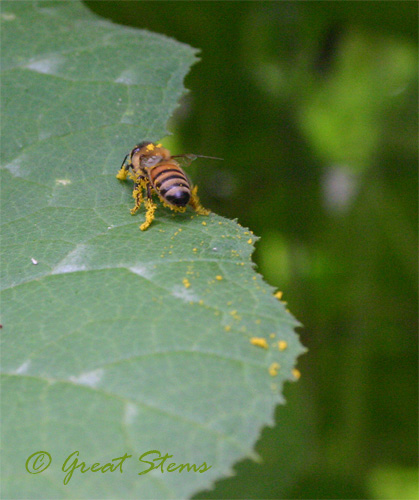
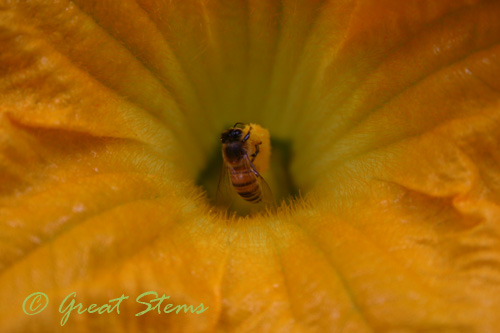
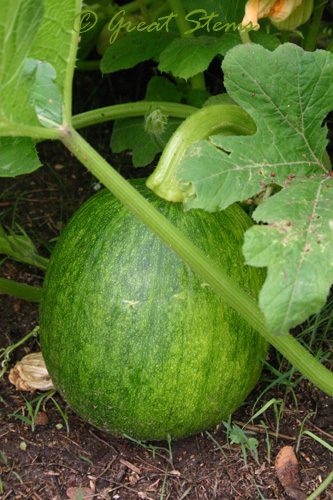
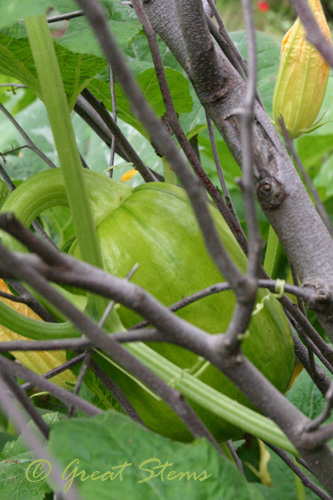 With the rain this week, the yard is a big mudfest for the dogs, and they took advantage of it -- digging where they shouldn't, trampling through the butterfly garden, and taking turns leaping over the pumpkin vines. I'm out there yelling, "This is not your playground!" And then I realized my neighbor must think I'm nuts, because of course it IS their playground. If I can manage it, I'll try to get a picture of the husky leaping in full gallop over the massive pumpkin plants (in between my yelling at him, of course). It really is a sight to behold.
With the rain this week, the yard is a big mudfest for the dogs, and they took advantage of it -- digging where they shouldn't, trampling through the butterfly garden, and taking turns leaping over the pumpkin vines. I'm out there yelling, "This is not your playground!" And then I realized my neighbor must think I'm nuts, because of course it IS their playground. If I can manage it, I'll try to get a picture of the husky leaping in full gallop over the massive pumpkin plants (in between my yelling at him, of course). It really is a sight to behold. 





